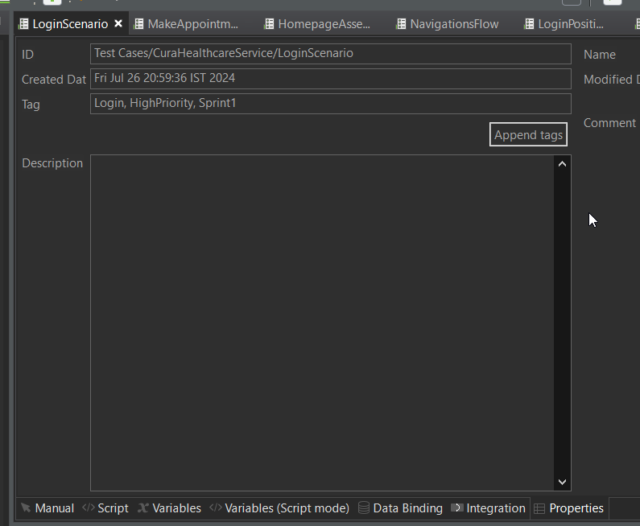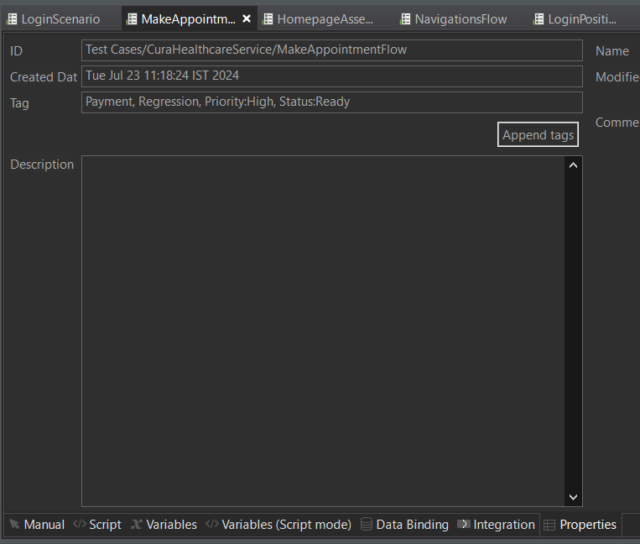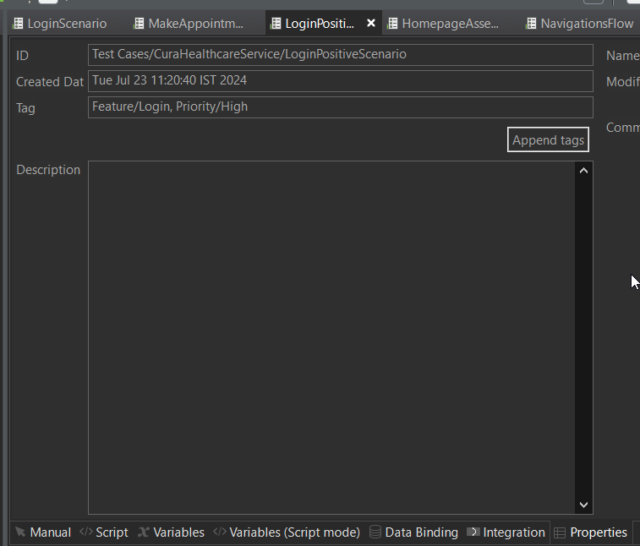Introduction
Efficient test management is essential in software testing, and Katalon Studio’s tagging feature offers a powerful way to categorize and manage your test cases. This advanced guide delves into the nuances of using tags in Katalon Studio, providing insights to help you optimize your test management strategies, including examples from Salesforce testing.
Understanding Tags in Katalon Studio
Tags in Katalon Studio act as metadata for test cases, allowing you to categorize them based on various criteria such as functionality, priority, sprint, or any custom attribute relevant to your project. By assigning tags to test cases, you can efficiently filter, search, and group tests, making test management more effective and organized.
Advanced Tagging Strategies
-
Multiple Tags for Complex Categorization
In complex projects, a single tag might not suffice to categorize a test case. Katalon Studio enables you to assign multiple tags to a single test case. For example, you can tag a test case as Login, HighPriority, and Sprint1 simultaneously. This multi-tagging approach allows you to create highly specific subsets of test cases for execution.

Multipletags
// Example of assigning multiple tags
WebUI.comment('Tags: Login, HighPriority, Sprint1')
-
Combining Tags with Test Case Properties
Enhance your tagging strategy by combining tags with test case properties such as priority, status, or custom attributes. While Katalon Studio’s UI provides a way to set properties, tags can further refine test categorization for better decision-making during test execution.

Combining Tags
// Example of combining tags with properties in comments
WebUI.comment('Tags: Payment, Regression, Priority:High, Status:Ready')
-
Tagging Hierarchies
Implement a hierarchical tagging structure where broad categories are broken down into more specific subcategories. This approach helps maintain a clear and organized tagging system.

Tagging Hierarchies
// Example of hierarchical tags
WebUI.comment('Tags: Feature/Login, Priority/High')
Managing Tags Effectively
-
Consistent and Meaningful Tags
Ensure that tags are used consistently and meaningfully across all test cases. Avoid redundant or overly generic tags that might clutter your tagging system. Establish naming conventions for tags to maintain clarity and uniformity.
-
Tagging Governance
Implement a tagging governance policy to ensure that tags remain meaningful and useful. Regularly review and update tags to reflect changes in the project scope or requirements.
Handling Changes and Updates
Maintain the relevance of your tags by regularly reviewing and updating them. Implement a tagging governance policy to ensure that tags remain meaningful and useful. This approach helps in managing changes in test cases and tags efficiently.
Case Studies and Real-World Examples
To illustrate the power of tags, consider the following case studies, including Salesforce testing scenarios:
E-commerce Platform
An e-commerce platform uses tags to categorize test cases by features such as Checkout, Payment, Search, and UserManagement. This categorization allows for targeted test execution and efficient test management.
// Example tag comment for an e-commerce test case
WebUI.comment('Tags: Checkout, Payment, Sprint3')
Banking Application
A banking application employs tags like Security, Transactions, and UI. This approach helps in prioritizing critical tests and ensuring comprehensive test coverage for essential functionalities.
// Example tag comment for a banking test case
WebUI.comment('Tags: Security, Transactions, Priority:High')
Salesforce Testing
Salesforce automation can benefit significantly from tagging due to its complex and dynamic nature. Use tags to categorize tests by Salesforce modules, functionalities, or even specific customizations.
// Example tag comment for Salesforce test cases
WebUI.comment('Tags: Salesforce, Accounts, Regression')
WebUI.comment('Tags: Salesforce, Contacts, SmokeTest')
By tagging test cases based on Salesforce modules such as Accounts, Contacts, and Opportunities, you can quickly filter and execute tests relevant to recent changes or specific functionality areas.
Conclusion
Tags in Katalon Studio offer a robust mechanism for efficient test management. By adopting advanced tagging strategies and integrating tags with your test execution processes, you can significantly enhance the organization, execution, and maintenance of your test cases. Embrace these techniques to streamline your testing processes and ensure high-quality software delivery.


Thank you for sharing good information.